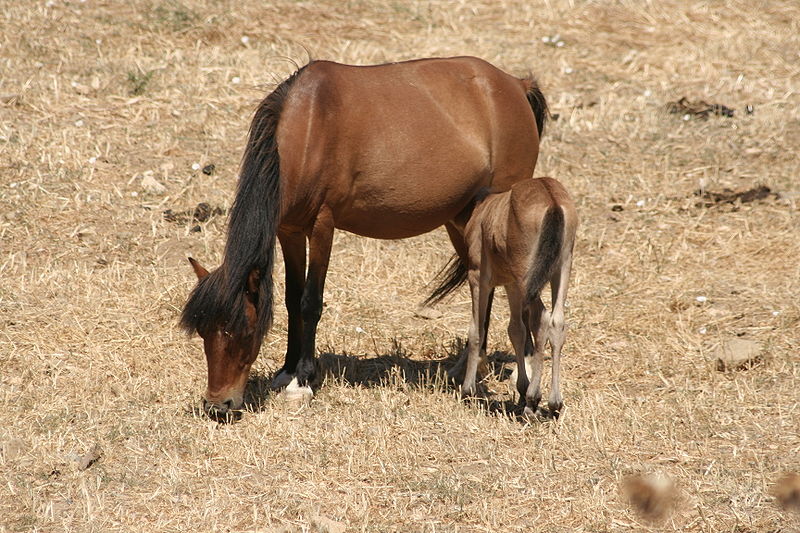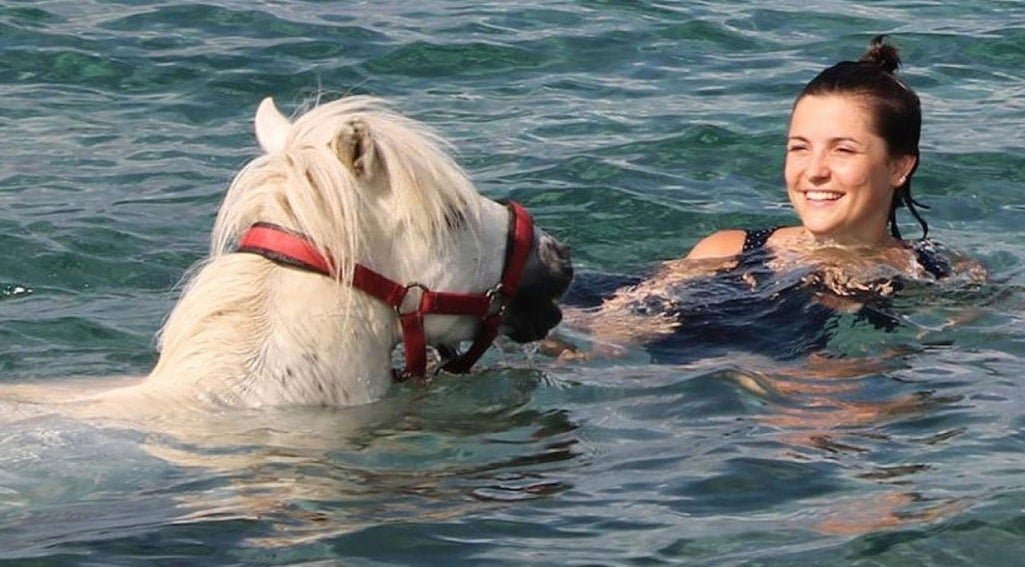
The Skyros horse, a breed with roots tracing back centuries in the Greek island, faces an ongoing threat of extinction. However, island residents are working with love, perseverance, and self-sacrifice to save it.
Local tradition holds that the Skyros horse is a descendant of the horses Achilles used during his Trojan War campaign and a relative of Alexander the Great’s horses. It’s also believed to be connected to the horses depicted in the Panathenaic Procession on the Parthenon Frieze. This is because, in antiquity, the Skyros horse lived throughout Greece. It’s estimated that Athenian settlers brought the breed to Skyros in the 5th century BC.
A lifelong passion for the preservation of Skyros horses
Manolis Trachanas, manager of Mouries Farm, one of three facilities on the island dedicated to the controlled breeding of Skyros horses for their preservation, shares his connection to the breed. “When I was about 10-12 years old, my father brought a small horse into our family,” recounts speaking recently to the Athens Macedonia News Agency (AMNA).
“I have many memories from my grandparents and generally as a child—memories of horses being used for work, constantly walking on the road, existing freely—because there were many of them back then—and then this gift I received from my father as a child.”
Mouries Farm was established approximately 15 years ago to revive the species. Trachanas’s family grew as his first mare gave birth, and his deep affection for the horses led him to commit to their breeding seriously.
“Until then, we had horses, but about 15 years ago, we started seriously studying their characteristics and everything we now pay attention to,” Trachanas explains. “Because the population is small and endangered, the breed requires great care and immense attention during reproduction so that the foals born have ‘Category A’ characteristics, as we call them.”
Unique characteristics and breeding challenges

Skyros horses typically reach a height of up to 1.10 meters and are distinguished by their long, rich manes, unique build, and calm temperament, which makes them very friendly towards humans. Their significant difference from ponies is that they retain all the characteristics of a horse but in miniature. Furthermore, they are a sociable, calm species suitable for activities with children and hippotherapy.
Beyond these characteristics, controlled breeding emphasizes avoiding kinship between mating horses to prevent genetic abnormalities and the birth of foals with problems. Fortunately, this has never occurred at Mouries.
For every new horse, six months after its birth, a DNA analysis is performed from its tail hairs, and it is microchipped so that each horse can be linked at any time to its legal owner and the person responsible for its well-being.
Current population and future vision

“Currently, at Mouries, we have 60 Skyros horses and three donkeys. Their total number is estimated to be 180 individuals. Therefore, the population we have is very significant for the continuation of the species,” Trachanas told AMNA.
He adds that the horses at Mouries do not perform work and are not subjected to strenuous activity. While the farm welcomes visitors who wish to learn about this unique breed, the horses are available only for riding by children under 40 kilograms to safeguard their health.
“We are three farms keeping the species alive. We have a total of about 110 horses out of the 180 on the island, with efforts to reproduce them because we are seriously interested in their rescue and we are fighting for it,” emphasizes the Mouries farm manager. Trachanas notes that the Skyros horse is not “economically useful,” which is why locals no longer prefer them. Additionally, the cost of their upkeep is substantial, which is why Mouries invites volunteers to the farm and citizens to adopt horses remotely.
Previously, in the southern part of the island, on the Ari plateau, free-ranging herds of Skyros horses lived in a semi-wild state. However, a fire that destroyed the forest deprived them of their natural habitat and forced them into human care.
“There’s a regulation here on the island that allows horse owners, all horse owners, to release them freely whenever they wish in the southern part of Skyros, which is the most open area. It’s vast. However, the forest couldn’t regrow there because we also have livestock farming on the island, which is also developing in that area,” Trachanas points out.
“Hundreds, maybe thousands, of horses used to live there. Back then, these horses were the machines of that era. Now they cannot survive on their own.” He adds that the responsibility for the species’ preservation currently rests on him and the other two private farms on the island.
“It’s a globally unique breed. There’s nothing else like it,” Trachanas states, reiterating the local tradition regarding the breed’s origin. “You find them individually in Thessaloniki, Corfu, and Scotland because some left Skyros. But it lives only on Skyros and is special. It’s not a pony; its skeleton, its build, its characteristics make it extremely rare, and it’s a breed that comes to us from antiquity.”
Skyros horses: A global treasure and cultural heritage

Skyros horses are not for sale and serve as an incentive for people to visit the island, among many other rare and uniquely beautiful animal and bird species. “It has no commercial value. We keep this horse only because it must be preserved. It’s the island’s history, it’s cultural heritage, and unfortunately, we’ve seen some things lost over the years,” notes the Mouries farm manager, adding, “And, of course, all these years, who helped the people of Skyros? This horse.”
Indeed, Manolis has instilled his vision for the island’s miniature breed in over 1,500 volunteers who have visited Mouries in the last decade. The horses also attract visitors and inspire artists who exhibit their work in the island’s main town (Chora).
Manolis’s dream for the future is to establish a protected park where Skyros horses can gallop freely but with proper care. “To reproduce, to have places where they can be protected from the weather conditions, to have someone care for them, to have food, not to be at the mercy of God but to be free,” Manolis concludes.
Related: Miniature Horses on Rhodes Threatened by Extinction

